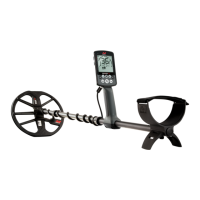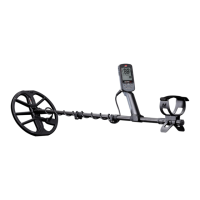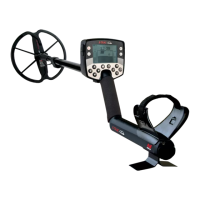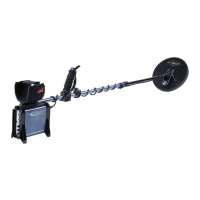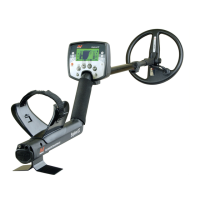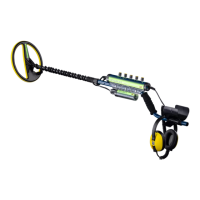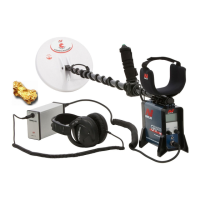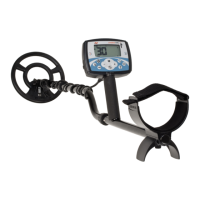Target ID & Discrimination
A detected target is shown as both a number and a segment on a scale. These indicate
its ferrous or non-ferrous properties for quick and easy identification.
A Target ID of 32 indicates a non-ferrous,
high conductive target (e.g. a coin).
When there is no detection, the Target ID
Display shows two dashes.
A Target ID of -3 indicates a ferrous target
(e.g. a nail).
Target ID
As the coil is swept over a target, the detector digitally processes
the target signal and represents the result as a number on the LCD.
Target ID is used to distinguish one type of metal target from
another. Target ID numbers range from –9 to 40.
Ferrous (iron) targets range from -9 to 0.
Non-ferrous targets range from 1 to 40.
The last detected Target ID remains on the LCD for five seconds
or until another target is detected. If there is no detection, or the
detector passes over a target that it rejects, the LCD will display
two dashes.
Record the Target IDs of the objects you find. Over
time, you will be able to create your own
discrimination patterns using this information, to make
your detecting sessions more productive.
Discrimination Scale
This circular scale corresponds to the 50 Target IDs, grouped
into 5 Regions. Accepted (detected) targets are shown as visible
segments. Rejected (non-detected or ‘blanked’) targets are turned
off.
Note: this is opposite to X-TERRA, Safari, E-TRAC and CTX 3030
detectors.
You can discriminate between desired and undesired targets that
appear along the Discrimination Scale. Therefore you only hear
target signals from those you want to find. Unwanted targets are
ignored.
You can do this by the following methods:
• Accepting/Rejecting detected targets upon detection using the
Accept/Reject button (page 49)
• Creating a discrimination pattern via the Accept/Reject setting
(page 49)
A grey icon
represents a flashing
icon on the LCD.
Target ID
Display
Discrimination
Scale

